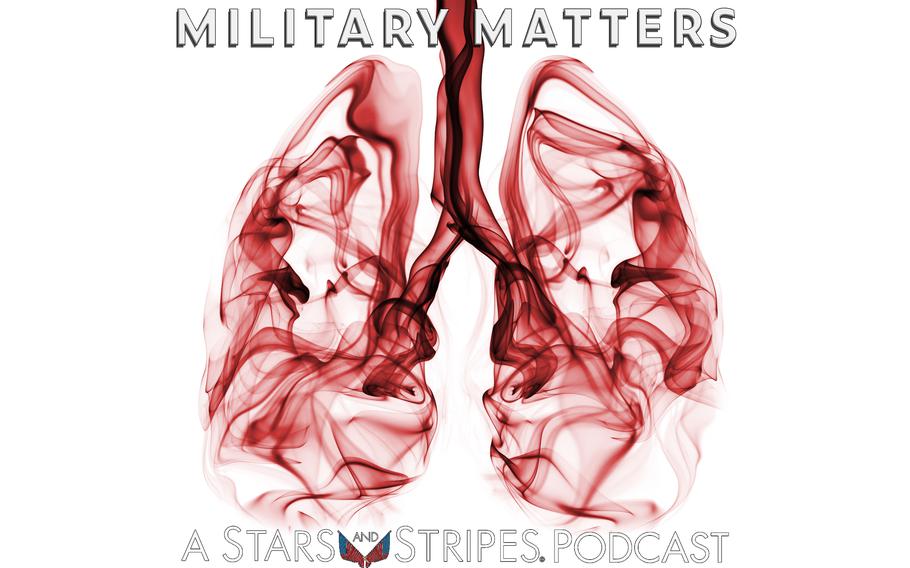
(Stars and Stripes)
Veterans who served in the Middle East during the Global War on Terror are looking down the barrel of their own Agent Orange situation: the number of respiratory issues that have come to light since 9/11 stemming from the use of burn pits.
In August, the Sgt. 1st Class Heath Robinson Honoring Our Promise to Address Comprehensive Toxics Act of 2022, or PACT Act, was signed into law to make it easier for veterans to seek treatment for these now presumptive conditions. But if you served in Iraq or Afghanistan and don’t have any health issues, you may not necessarily be in the clear, says Dr. Richard Meehan in this week’s episode of Military Matters.
Meehan, a Navy veteran, is a rheumatologist and the co-director of the Post-Deployment Lung Health Center at National Jewish Health, which focuses on diagnosing and treating service members and veterans for lung conditions that developed during their service. He said that toxic exposure from burn pits is often compounded with poor air quality in the Middle East, and that it can be difficult to diagnose veterans after the fact without a baseline evaluation prior to deployment.
“When you take an airborne Special Forces guy that is incredibly fit and now they can't complete their physical fitness test — they were running five-minute miles, six-minute miles before, and now they're basically going to have to be discharged from the military because they can't complete their test,” Meehan said. “But yet all their standard breathing tests come up, quote, ‘normal,’ meaning it's within 85% of a normal, sedentary, inactive American. And so it takes sophisticated testing to figure out what's going on with these individuals and sometimes even a surgical lung biopsy to show that in fact they do have airway injury from their inhalation exposures.”
Meehan and others at the center are working on less invasive methods of diagnosis, including artificial intelligence and the lung clearance index test, which measures the lungs’ ability to get rid of inner gas.
“Our goal now, knowing that it's a scarring type of toxic exposure to the lung, we want to do everything we can to maximize all the other treatable conditions,” Meehan said.
Not every service member returned from a deployment with these conditions — Meehan said that only “a small number” of the 542 Seabees in his unit have had respiratory problems, for example. But there are warning signs you can watch out for, Meehan said.
“You should be able to do almost the same level of activity if you're maintaining some regular exercise,” he said. “If you start having a decline in that, and especially the most common complaints would be, you know, ‘I'm short of breath only when I exercise, and then I'm short of breath with less exercise. Now it's short of breath going upstairs.’ That needs to be evaluated. ‘I've got a chronic cough, this cough, you know, I've seen multiple docs, they don't know what it is. I've tried antibiotics, tried steroids, I've still got it.’ That needs to be evaluated.”
You can find Military Matters on Twitter @stripesmmpod.
Follow Jack Murphy on Twitter @jackmurphyrgr and Rod Rodriguez @rodpodrod.
A transcript of the episode can be found here.
Go to www.stripes.com, use promo code PODCAST and save 50% on your digital subscription.